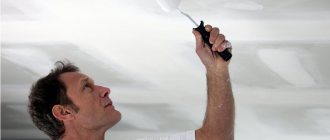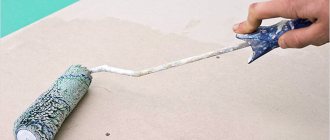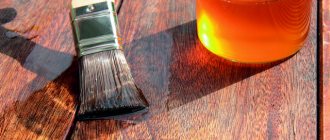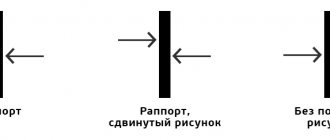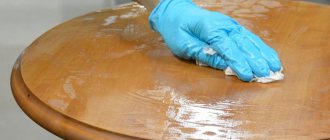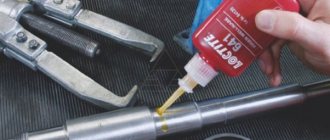In the process of arranging premises, materials are often used that protect the coating from harmful factors. One such composition is silicone primer. This is a universal product that can be used on almost any type of surface. Unlike similar substances, this solution has excellent properties, which can significantly extend the service life of any structure coating.
What is a deep penetration primer
The basis of the repaired surfaces can be different materials - wood, concrete, cement-sand or gypsum plaster. Their properties are different, so their adhesion to the finish will be different. To make it as durable as possible, use a primer. This is impregnation for walls, which can penetrate to a depth of 5-10 mm. It is represented by a wide range on the building materials market. Separately, it is worth noting that it is universal - it is suitable for almost any surface.
Scope of application
Deep penetration primers fill the porous structure of concrete, making it more resistant to external influences and increasing adhesion to finishing materials.
Concrete has a very high density, hence very low absorbency. Therefore, plastering or painting such a surface without prior preparation will not be effective.
Such compositions will be the only right choice if you plan to use heavy wallpaper as interior decoration - not a single glue can hold the sheets on a concrete wall.
Despite their intended purpose, concrete primers can be used on:
- plastered walls;
- drywall;
- brick;
- gas blocks;
- foam concrete blocks.
Due to their properties, the compositions of this group are rightfully considered universal.
Primers with high penetrating ability are ideal for preparing substrates in areas with high levels of humidity - in bathrooms and kitchens. Here the walls are constantly in contact with moisture, which can cause the appearance of fungus and wall mold.
A primer containing antiseptic substances is guaranteed to prevent the development of pathogenic microflora.
Polymer primer
To improve the quality characteristics of the base and increase adhesion, manufacturers offer new compositions whose properties are superior to existing analogues.
Polymer primer is one of these materials. It appeared on the market relatively recently, but has already gained popularity among craftsmen and customers.
Purpose of polymer primer
The scope of application of polymer primers is quite wide. It is necessary
- to strengthen loose foundations;
- to eliminate dust and protect against moisture;
- to improve adhesion in the composition of the surface on which the polymer coating will be applied;
- to eliminate minor irregularities and pores;
- to reduce the consumption of building materials when performing the next layer.
Technical characteristics and component composition of soils
A high-quality polymer primer coating can be obtained by observing the basic technical parameters of the material:
- work can only be carried out at above-zero but low temperatures (permissible amplitude is 5–25°C); if the temperature is lower, it is better to refrain from coating with the composition;
- the maximum drying time is 1 hour, the minimum is 30 minutes;
- allowed to be used no later than six months from the date of manufacture;
- The recommended mixture consumption per 1 m3 is 250 g (the figure may vary slightly depending on the conditions of use).
The composition of the polymer soil includes:
- components that maximize absorption;
- concentrates;
- substances that promote the formation of a protective film;
- dyes and components that increase the plasticity of the composition.
Advantages and disadvantages
The list of advantages of polymer soil is respectable:
- resistance to a number of harmful influences: mechanical damage, acids, alkalis and other aggressive substances, ultraviolet radiation and high temperatures, it is not afraid of water;
- excellent fire protection characteristics;
- waterproof (a protective film is formed on the surface that prevents moisture from entering);
- long service life (maximum for this period);
- short period of complete drying;
- the color of the solution is not only white - it can be tinted in different colors;
- applied both indoors and outdoors;
- does not emit toxic fumes.
The only negative of the composition is the lack of antibacterial components. Despite the formation of a moisture-proof film, if it is damaged, the formation of mold and mildew cannot be ruled out.
Main functions of primer
Traditionally, primers are used to increase adhesion between layers of finishing materials, and paints for these materials are used on top of them.
It should be added that in the standard version they are designed for substrates with average absorption rates. There are only a few such surfaces; the rest require improvement in quality characteristics.
This function is performed by such deep penetration soil compositions. They penetrate into the base to a depth of 7 mm, making it denser, thereby regulating the absorbency of surfaces.
This improves adhesion and reduces the average consumption of materials when applying subsequent layers. Priming is preparation (one of its stages) for painting.
On dense substrates with a perfectly smooth surface, primers form a sticky film, which increases adhesion.
It is difficult to apply plaster or paint to a perfectly flat surface. The mixtures spread, do not form a high-quality coating, and after drying are not held firmly.
Using soil with the necessary characteristics eliminates this problem. At the same time, material consumption is significantly reduced.
Another problem that the primer composition solves is increasing waterproofing characteristics, which is important for rooms with high humidity.
Having carefully studied the composition, it is recommended to choose primers with antibacterial components. This composition will not only keep moisture out, but will also prevent the formation of mold.
The most difficult thing is to connect materials that are not friendly with each other. Most often, the cause of such rejection is dust. Such properties are characteristic of cement and gypsum.
Adhesion between these materials can be ensured only with the help of special deep penetration primers (impregnations), for example, such as Knauf and Polytek concrete contact.
Primers can be used as an independent anti-dust coating.
Types of bases
The choice of primer composition depends on the type of base, which are divided according to absorbency:
- low;
- medium - increased;
- high.
The first include cement, concrete, sand concrete, and expanded polystyrene. Refractory bricks and gypsum blocks have the same characteristics.
has average absorption rates , but this material must be primed. Brick has similar properties, but only old material that has already begun to deteriorate needs an improving coating.
Surfaces with high absorbent properties include cellular concrete, main types of plaster (gypsum, cement, lime, mixtures), blocks (gas silicate, foam concrete), and sand-lime brick.
If you have difficulty determining the degree of absorbency, you need to conduct a simple experiment - drop water on the surface and measure the time during which it is absorbed.
On a base with low indicators, moisture will disappear after 20 minutes, with high indicators - after 3 minutes. Average numbers will allow us to classify it as the second type.
Experts recommend that for materials with low absorbent properties, purchase primer compositions that form a sticky film with high strengthening properties.
If it is not possible to get rid of dust, a deep penetration primer is needed. For foundations with average characteristics, the choice of soil is determined by their condition. A qualified specialist will help you make the right choice.
Functional purpose
As you know, concrete is a material with high density and hardness, but at the same time it contains micropores. The porous structure has both its advantages and disadvantages. In particular, if the concrete surface is left as is, then its pronounced absorbent ability leads to increased costs of paint and varnish products. A primer with a deep penetration effect is a special composition that gets into micropores. This allows you to strengthen the concrete from the inside, and at the same time increase its adhesive properties. As a rule, this is achieved through acrylic polymers, which are rich in some types of deep penetration primers for concrete. When using them, along with the strengthening effect, the absorbency of the building material decreases.
Primer mixtures are used for exterior or interior finishing. After surface treatment, other types of finishing can be used: putty; tiling; paint and varnish products; plaster (including decorative); wallpaper (including liquid). In this case, the primer makes it possible to apply subsequent finishing materials in an even layer. Based on this, it becomes clear that the application of such compounds is a necessary and important process.
Scope of use
applying silicone primer to the wall
In terms of its composition, silicone primer (the price of which is very affordable) is a kind of concentrated composition. Different manufacturers offer their own versions of the component that ensures adhesion, but the acid part is the astringent component. This primer will perfectly prepare concrete walls for further finishing. This leads to its use in processing many types of buildings - from residential to industrial premises. Mainly those with porous inclusions.
Primer for silicone paint is also very popular. It is still preferable to use this material outside. The following reasons can be given for this:
- The toxicity of the substance itself (you have to work in respirators).
- Creating a super-resistant coating (this is not necessary inside the house).
- High vapor permeability.
- Resistance to numerous external atmospheric influences.
However, if you still decided to use this type of primer for interior work, then you can remember that it is perfect for drywall and other mineral substrates. But you need to know that only silicone paints and plasters can be applied on top of it.
general information
Primers perform the following functions: Reduce the absorption of finishing materials because they fill the surface pores. As a result, the paint, varnish or glue is not wasted, but remains on the surface of the material. Increase adhesion (the ability of materials to adhere). Although it is worth making a reservation here: if we are talking about cement plaster, then the adhesive properties will become worse, since the cement laitance will not be absorbed into the pores - after all, they will already be filled with primer. They strengthen the base, penetrating deep into the structure of loose and porous surfaces. The soil seems to connect the disparate elements of the base with each other. The likelihood of plastered surfaces falling off, whitewash peeling off, mortar chipping at the seams, etc. is reduced.
Main types and companies
Silicone compounds are manufactured by almost all leading companies engaged in the production of such products.
The following brands can be specified:
- Tikkurila.
- Finngard.
- Ceresite.
- Alpina.
- Snowball.
From Russian:
- Façade.
- Halo.
- Admiral, etc.
It should be understood that the fact that any composition belongs to a well-known brand does not mean full compatibility with this particular material, therefore it is necessary to take into account the operating conditions and base material.
Compound
The composition of deep-penetrating primers includes the following components: Water. Only water-based primers are offered on the Russian market. Acrylic resins. They act as a connecting element. Polymers. They provide good moisture to the treated coating and allow the soil to penetrate to maximum depth. As an option, the following components can be added to the soil: Fungicides, which act as an antiseptic.
The antiseptic properties of the soil help prevent the occurrence of mold and mildew. Such mixtures are especially useful if the surface will be used in conditions of high humidity. Latex, which allows you to increase the adhesion of small surfaces. Latex also improves the adhesion of low-porosity materials. Silicone makes the base waterproof.
Characteristics
The penetrating composition has a number of special technical characteristics.
Let's look at the main technical characteristics:
- Penetration depth. The standard value is 0.5 cm. For high-quality mixtures, the penetration depth can reach 10 mm.
- Material consumption can range from 50 to 300 g per square meter. It all depends on the specific type of primer composition and the type of surface being treated.
- Dry residue. The higher the value of this indicator, the greater the amount of water that can be used to dilute the soil without deteriorating its characteristics. After diluting the mixture in water, the dry residue should not fall below 5%.
- The drying time of the coating depends on the composition of the mixture. At a temperature of 20 degrees Celsius and air humidity of 70%, the average drying time can be from 1 to 3 hours.
- Operating temperature ranges from – 40 to + 60 degrees.
- The diameter of the mixture particles can be from 0.05 to 0.15 microns. The solution can be applied at temperatures from 5 to 30 degrees.
Dyeing technology
Preparatory stage
First you need to correctly assess the condition of the facade. If it was painted with oil enamel or coated with varnish impregnations (for example, “wet stone”), the top layer will have to be thoroughly cleaned, regardless of the strength of the coating. To remove varnish, use special removers or sandblasting. The easiest way to remove oil paint is with a hair dryer and a hard spatula.
Mechanical method of removing old paint
There is no need to clean acrylic paint, the main thing is that there are no peelings, oil stains on the surface, or other contaminants.
Video - Removing old paint
Prices for different types of paint removers
Paint remover
If the facade was simply plastered, you need to check the integrity of the plaster over the entire area. Areas that have begun to crumble and crumble should be cleaned with a spatula to a solid base and puttied. Cracks wider than 2 mm are sealed with cement-sand mortar. If you plan to paint the brickwork, be sure to check the seams and fill the voids with mortar.
Cracks need to be filled
For priming, it is best to use water-based silicone compounds, and it is advisable to buy both primer and paint from the same manufacturer. For smooth concrete surfaces, one layer of primer is enough; for plastered surfaces, 2-3 layers are needed. Allow a certain amount of time between coats to allow the primer to dry completely.
Priming the facade significantly improves the adhesion of the new coating to the surface
If there are decorative inserts or areas on the facade that are not intended for painting, they are sealed around the perimeter with masking tape so that you do not have to scrub off the paint later. The same is done around door and window openings. When using a spray gun, it is better to cover the window glass with film, thin plywood, or at least newspapers.
Paint tinting
Shades of colors
Nowadays almost no one paints the facade white. Thanks to the huge range of colors, you can choose almost any shade to make your home different from others. Ready-made colored paints have a limited range, so many people prefer to do the tinting themselves. Sometimes, as a result of incorrectly selected components or a violation of the mixing technology, painted walls turn out to be spotty, with unaesthetic stains or inclusions. Another common problem is the difference in shades when painting large areas, for which the paint has to be tinted in several portions.
To avoid such mistakes, you must follow the following rules:
- color and paint must be chosen from the same manufacturer. In this case, the base paint should have a reduced content of white pigment, which makes it difficult to color the composition. Manufacturers usually indicate this information in the instructions on the paint buckets;
Color in plastic packaging
- the amount of color should not exceed 20% of the total mass of paint. Excessive content of such pigments leads to a decrease in the covering ability and water resistance of silicone paint, reducing its service life;
- When mixing paint, strictly adhere to the same proportion. If you took 10 liters of paint and 1 bottle of color for the first portion, then next time take exactly the same amount. But you can’t: even some 30-40 g of base paint will affect the final result, and after the wall dries, one area will be lighter than the other. The same applies to colored pigment - just a couple of drops more or less, and you won’t be able to get the desired shade.
It is important to strictly follow the proportions
Tinting is done as follows: pour the desired color from a bottle into a bucket of white paint and mix with a mixer until the mass becomes homogeneous. It is not recommended to mix by hand, since undissolved pigment particles may remain in the paint (especially at the bottom of the bucket and at the bottom of the walls), which, when painted, will leave contrasting blotches and stains on the surface.
Do-it-yourself paint tinting - how not to make mistakes
Surface painting
For high-quality coloring, it is very important to choose the right tool. It is convenient to paint smooth, even walls with a roller; brickwork, wood and relief plaster - with a brush.
Fur rollers are convenient for painting large surfaces
It is recommended to choose synthetic rollers and brushes for silicone paint.
Maklovitz brush
Curved brush for exterior use
But it is best to use a spray gun - with its help you can quickly and efficiently cover any surface.
Electric spray gun
Prices for paint sprayers
Spray gun
Let's look at the procedure for painting plastered walls using a roller.
Step 1 . First, use a brush to paint corners, areas around openings and decorative inserts on the walls. The paint is applied in a thin layer and rubbed well so that it fills the slightest depressions.
Paint the corners with a brush
Step 2. Next, pour the paint into the paint tray and roll the roller several times so that it is evenly saturated.
The tray will allow you to immediately put paint on the roller and roll it out
The first layer of paint is applied in vertical stripes from top to bottom, pressing the roller firmly to the surface. Try not to leave unpainted areas or layers of paint.
Painting walls with a roller
Step 3 . After the entire facade has been painted, you need to wait a while. Despite the fact that it takes from 4 hours to a day to dry completely, silicone paint can be applied as a second layer 1-2 hours after the first. The exact intervals between application of layers are indicated in the instructions, as well as the time for complete drying.
Step 4. Once the walls are dry and the paint does not leave marks on your hand when touched, apply a second coat of paint. Everything is done exactly the same as the first time, only the movements with the roller should not be vertical, but horizontal.
Applying a second layer
After painting the main area of the facade, you can begin processing the base and decorative elements. All work must be carried out in dry, windless weather, in a temperature range from +5 to 30 degrees. If it rains within 24 hours after painting, it can reduce your efforts to zero, and the work will have to be redone. Although the paint is hydrophobic, it can be easily washed off with water before the coating dries completely.
Painting the basement of the house
Smooth, large areas must be painted without interruption in work. If you leave the unpainted part until the next day, you risk getting areas that differ in color. During operation, the paint must be stirred regularly, as it tends to settle.
Painting wooden facades
Silicone paint is also great for wooden houses. The main condition is that the tree must be completely dry and strong.
Step 1. Use a brush or scraper to remove old paint, after which the surface is wet cleaned to remove dust and dirt.
Facade cleaning
Step 2. If necessary, strengthen the plank sheathing and replace damaged elements.
Step 3. Apply the primer in 2-3 layers, depending on the porosity of the wood. Particular attention is paid to the joints in the corners and near the openings.
Prices for wood preservatives
Impregnation for wood
Step 4. After the walls have dried, begin painting. To do this, it is best to take a wide paint brush with medium-length bristles. The paint is applied along the boards, evenly rubbing over the surface with a brush. After the initial treatment of the area, take a break for 1-2 hours, then apply the second layer.
Painting a wooden house outside
Wooden house in the process of painting
If the technology is followed, such a coating will reliably protect a wooden facade from moisture for 10-15 years without reducing its decorative qualities. Much depends on the wood itself - the stronger the material, the longer the coating will last.
Painted wooden house
Caring for painted surfaces
The coating that silicone paint forms is absolutely maintenance-free. Most of the pollution (dust, soot from car exhausts) is washed away during rain, so the façade looks clean almost all the time. If necessary, you can spray the walls with water from a hose, this will be quite enough.
Despite the elasticity and strength of the film, strong mechanical stress leaves scratches on the paint through which the base can be seen. Such defects can be eliminated by tinting, but the difficulty lies in the fact that the paint remaining after the repair is not stored for a long time, and it is not easy to choose exactly the same color.
Painting the outside of a house
In this case, you need to buy the smallest package of white paint and the corresponding color, then pour 100 g of paint into a separate container and add 1-2 drops of pigment. Stir thoroughly until smooth, evaluate the result. Add 1 drop of color until the color reaches the desired shade. Now apply the paint to the wall where it will be least noticeable and wait until it dries. Just a couple of strokes are enough, you don’t need to paint over a lot. After 1-1.5 hours, you can compare the colors - if the fresh strokes do not stand out against the background of the wall, the ratio is correct, otherwise more dye should be added. Be sure to remember the proportions, because the test quantity may not be enough to cover all the defects.
Bright facades of painted houses
Facade of a private house
Kinds
Depending on the composition, primer mixtures are divided into several varieties. Each type has its own distinctive features and properties. Let's consider the main types of deep-penetrating mixtures:
Acrylic
They are considered universal, as they are suitable for almost any material. These mixtures are characterized by good absorption and quick drying. The penetration depth of the solution can reach 10 mm. Excellent for applying to walls before wallpapering.
Silicone
This soil is used for external and internal work. Silicone mixtures strengthen the surface well and have water-repellent properties. Silicone primer is suitable for treating the base for different types of finishing materials.
Alkyd
Alkyd primer is not recommended for use on crumbling surfaces (for example, plaster, plaster). It is used more often to strengthen wood and metal. The mixture strengthens the structure and protects it from the formation of fungus and mold. This primer is well compatible with PVA, nitro paints, alkyd paints and acrylic putties.
Polyvinyl acetate
Such primers are used exclusively for painting. They have a high drying speed and reduce the consumption of paint mixtures.
Epoxy
These mixtures are used for processing metal and concrete. They improve the level of wear resistance of the coating.
Polystyrene
This primer is suitable for treating wooden and plastered surfaces; it forms a moisture-resistant protective film. The disadvantage of this primer is its high level of toxicity.
Shellac
Shellac primers are used to treat wooden surfaces; they penetrate deeply into the structure of the material and strengthen its internal and external layers, preventing resin from escaping through the wood fibers. After drying, such soil forms a durable protective film on the surface. The covering film protects the wood from moisture and rotting processes.
Silicate
This primer is applied under silicate paint mixtures. It forms a durable coating that has good vapor permeability and resistance to temperature changes. Excellent for exterior decoration.
Latex
Latex primer is made from water and polymers. Using this material, you can hide stubborn rust stains, soot and other types of dirt on the surface. This primer is suitable for external and internal work.
Water-dispersed
Water-dispersion primer is intended for external and internal work. It is frost-resistant, has a high level of adhesion, and protects the surface from environmental influences. The highly concentrated mixture can be diluted with water without losing the quality of its properties.
Why is this necessary?
silicone primer
It is necessary to treat the surface using this method, first of all, for the reason that the finishing coatings will last for decades. It's all about the main "secret" of their work - they help the layers to better adhere to each other (that is, act as an adhesive component).
The basic elements are usually a silicone component and quartz sand. This composition can do a lot for a wide variety of surfaces - from processing wood and drywall to providing concrete contact. Silicone primer for cement sheets is also possible. We can list just a few of its capabilities:
- Link two completely different textures together.
- Promote better and easier application of the putty composition.
- The paint layer on such a surface will be distributed more evenly.
- No moisture will accumulate in the pores of the base.
- Excellent for finishing work both inside and outside
By purpose
To give the soil additional beneficial properties, manufacturers add special components to the mixtures. Due to them, the primer is classified according to its intended purpose.
Antifungal
The antifungal mixture has protective properties against the formation of fungus and mold. The soil acquires such properties thanks to the fungicides included in its composition. Fungicides not only prevent surface contamination by fungus and mold, but also destroy existing microorganisms. This composition is also used for already contaminated surfaces.
Antiseptic
Its properties resemble an antifungal mixture. The difference is that antiseptic primer is used only to protect coatings from fungus and mold. Only uncontaminated surfaces can be treated with primer and antiseptic.
Facade strengthening
Used for exterior wall decoration. Facade primer strengthens the walls and improves the water-repellent characteristics of the base.
For concrete
This primer roughens the surface, improving adhesion. This primer is only suitable for interior finishing work.
Primer mixtures have differences in shades. For any surface being treated, you can select the mixture that is most suitable in shade, including a transparent variety. A white primer is often applied under wallpaper. This allows you to add brightness to the coating, avoiding color distortion.
Features of silicone facade paint
The basis of silicone facade paints is a water emulsion of silicone resins . This means that facade silicone paint belongs to the category of water-dispersed materials, which gives them certain advantages, but also creates some restrictions and requires compliance with certain working conditions.
In addition, the mixture contains various additives, fillers or pigments that give the coating strength, speed up drying and perform other special tasks.
According to its basic parameters, silicone paint is excellent for outdoor use. The coating provides the necessary vapor permeability, water protection, and has high elasticity.
The basic composition of silicate facade paint has a pure white color; to obtain the required shade, the mixture is tinted - the necessary pigments are added to it, giving the required color. The matte surface creates a strong decorative effect - the paint layer does not glare in the sun, the wall plane looks perfectly smooth.
A distinctive feature of water-dispersed paints is the absence of odor during application . This is an important circumstance that significantly makes life easier for all people who find themselves nearby - from the residents of the house or neighbors, to the painters themselves, who receive the maximum amount of emissions from the applied compounds.
Another important property of silicone compounds is their inherent “lotus effect”. That is, the surface has high water-repellent qualities and dirt or dust does not stick to it . In any case, a little rain is enough to completely clean the walls of the house.
A layer of silicone facade paint does not require any maintenance, does not require periodic application of various compounds, etc.
Technology
How is strengthening primer applied?
Is it difficult to prepare the surface for priming and subsequent work with your own hands?
- The surface to be finished is cleaned of peeling coatings and plaster that has come away from the base. Penetrating primer is not a magic wand: it can bind loose material together, but it will not glue the loose area back together. The work is done with a hard spatula; The plaster is tapped with a light hammer or pick.
- If possible, the base is cleaned of dust using a broom, brush or vacuum cleaner. Some dust will inevitably remain; There is no need to worry about this: the soil will connect it to the surface.
- The wall or ceiling is impregnated with primer using a wide brush or sprayer. On flat surfaces, you can use a medium or long pile roller. All work is carried out at positive air and base temperatures.
Tip: by replacing the sprayer from a glass cleaner bottle to a one and a half liter bottle of drinking water or lemonade, you will get a convenient tool for pneumatic spraying of primer: the threads of the caps are compatible. After finishing work, the sprayer is washed with plenty of water, after which it can be used as before.
Further instructions depend on your goals and the coverage you choose. Beacons are placed under the plaster; before puttying, the protrusions are removed from the base and the recesses are filled; Minor defects are puttied before painting, and so on.
Separately, it is worth mentioning the use of penetrating primers with gypsum putties.
Typically they are used twice:
- The first time the walls or ceiling are primed for puttying.
- The second time the primer is applied after sanding, just before painting.
How can I wash deep penetration primer from tools or surfaces on which it has accidentally come into contact?
On thematic forums there are several recommendations tested by the authors:
- Using baking soda and plenty of water, the remaining soil was removed from the plastic window sill.
- Acid detergent Sillit helped get rid of traces of soil on the tiles.
- In addition, “Mr. Muscle” and concentrated vinegar essence were successfully tested.
Methods of painting with silicone paint
Surfaces are considered ready for painting if they are durable (not crumbling), clean and dry.
As with painting with any paint, it is better to plaster a surface that is too porous and repair large defects.
We use a roller, brush or spray gun.
Prime and paint
- We treat the surface with silicone primer or silicone protection.
- Apply one coat of paint.
- We wait 12 hours - during this time the paint dries.
- Apply the second, finishing coat of paint.
Primer and topcoat
- Add silicone primer gel to the paint (for 10 liters of paint - 1 liter of gel). Mix thoroughly.
- After 12 hours, we carry out the usual painting of the surface with undiluted paint.
Painting without priming
- We paint the surface once.
- We are waiting for 12 hours.
- Paint the surface a second time.
An advantage that is difficult to dispute: silicone paint is self-cleaning, so caring for such a coating is quite simple.
How to make a choice?
Which deep penetration primer is best? When choosing a material for surface treatment, you should not lean towards the cheapest options. This is the case when the stingy pays twice: practice shows that the compositions of the lowest cost do not provide the necessary qualities for further work, the applied building materials do not have reliable adhesion to the base, wallpaper peels off, and plaster and other finishing coatings peel off from walls, ceilings, floors
A deep penetration primer is reliable, the price of which starts at 400 rubles per 10 liters. In addition to the price, you should pay attention to the manufacturer - products from well-known brands usually meet a high level of quality. Primers “Ceresit” and “Optimist” are in high demand among large and individual developers. These compositions have high technical characteristics, as well as an optimal price-quality ratio.
Differences from other types of facade paints
Unlike all other exterior paints, silicone compounds have the highest degree of elasticity. The coating layer does not form cracks with small changes in the linear dimensions of the base.
This makes it possible to hide the shrinkage of the house, calmly tolerate vibrations, seismic soil movements, etc.
Repair compositions of silicone paint have increased hiding power; they are capable of sealing cracks up to 2 mm wide.
Silicone compounds have a high thixotropy index. This property is characterized by an increase in the viscosity of the composition at rest.
Convenient quality when working with a roller or brush - the paint rolls off the tool less, the process becomes more accurate, and fewer stains or drops of paint remain.
In addition, silicone facade coatings have a high degree of alkali resistance . In practice, this means that it is possible to paint the surface within 48 hours after applying the outer layer of plaster, while other paints can be applied only after a month, in order for all the curing processes of the cement compositions to be completed.
On guard of health
When buying a primer before carrying out major repairs, you should choose one that has antiseptic properties. Moreover, it does not matter what type it is and for what types of work (exterior or interior decoration). Thanks to this, the risk of mold or mildew on concrete surfaces is eliminated. This is especially true when there are small children in the family. And if for parents the price of a deep penetration primer does not matter, then when planning a renovation in a children's room, you simply cannot do without this finishing material. After all, the fungus releases its toxins into the air. As a result, in such a room you can not only catch a runny nose or allergies, but also more serious diseases. And children, due to their not yet strong bodies,
Acrylic deep penetration primer
The following type of soil is also used on almost any base, be it wood, brick, drywall or concrete. For this reason, it is considered one of the universal types. A distinctive feature is its deep penetration into the surface. In addition, many manufacturers use various additives, often antiseptic. Thanks to this, the deep penetration acrylic primer is perfect even for the bathroom. Optimist, acrylic primer with antiseptic additives, 10 l Price: 550-600 rubles. Technical characteristics: consumption – 100-250 ml/m2; penetration depth – 1-5 mm; White color; storage conditions – at a temperature of 5-30 degrees; application conditions - in rooms with a temperature of 5-35 degrees; drying time – 2 hours; shelf life – 12 months.
Pros: equalizes absorption capacity; quick drying; reduces the consumption of paints and varnishes; prevents the growth of fungus, mold and other microorganisms. Cons: unpleasant smell. Acrylic primer of deep penetration Varnish 10 l Price: 1000 rubles. Technical characteristics: consumption – 50-100 g/m2; penetration depth – 1-5 mm; pink colour; application conditions - in rooms with a temperature of 5-35 degrees; drying time – 3 hours; shelf life – 24 months. Pros: non-toxic; has no pungent odor; suitable for work outside and inside; increases resistance to fungus and mold. Cons: none.
Features of use
Like other types of paints, silicone paints require preparation of the working surface and compliance with temperature conditions during application: not lower than 5°C and not higher than 25°C.
Paints are applied only at positive temperatures
The presence of dust, dirt, oil traces and loose coating on the walls will lead to peeling of the paint layer. At the same time, when preparing the facade, it is not necessary to carry out additional treatment with antifungal agents, since the silicone coating does not contribute to the development of mold and fungi. It is enough to apply a regular primer, which will strengthen the plaster layer and reduce paint absorption.
Facade primers Ceresit for facade surface preparation
Another feature of silicone paints is their resistance to alkaline substances, which allows them to be used 48 hours after plastering the walls. The vapor-permeable film, which is formed during the painting process, allows the plastered surface to “breathe”, but does not allow water to pass through from the outside. This significantly reduces the time needed to finish the façade.
Silicone paints from well-known manufacturers
| Name | Characteristics | Average market value |
Silikonharz Fassaden Weiss | Matte, white, can be tinted in different colors. Coverage class 2. Drying time for 1 layer is from 2 to 4 hours. Consumption 0.450 l/m2 when applied to a smooth surface. | 4,950 rub. (10 l). |
Ceresit CT 48 | White matte, tinted in any colors. Covering capacity – 120g/m2. Consumption – from 0.3 l/m2. Drying time 3 hours. | RUB 5,330 (15 l). |
FINNGARD FLA | Deep matte, tinted in any color. Consumption from 0.4 to 0.6 l/m2. Drying time for 1 layer is 12 hours. Coverage class 2. | RUB 10,250 (18 l). |
Bolars Effect | Semi-matte white, tinted in various colors. Coverage rate 110 g/m2. Complete drying time is 1 day, before touching – 1 hour. Consumption per 1 layer 150 g/m2. | 2,730 (15 kg). |
Caparol AmphiSilan Plus | White matte, tinted in light colors. Covering power 115 g/m2. Consumption on a smooth surface is 150-200 ml/m2. | 6,150 rub. (10 l). |
Weber.ton micro V | White matte, filled with microfiber. Can be tinted in any colors. Consumption 0.4-0.5 kg/m2. Drying time for 1 layer is 2 hours. | RUB 5,780 (10 kg). |
Kreisel Silikonfarbe 003 | Matte white with increased resistance to dirt and abrasion. Consumption on a smooth surface is 150-250 ml/m2. | RUB 5,065 (15 l). |
Ceresit CT 48. Silicone paint for interior and exterior work
Useful tips
As many experts advise, it is better to work with primer at positive temperatures from 5 to 25°. As for humidity, try to maintain a level of no more than 65%. Otherwise, the mixture will begin to foam during surface treatment.
Polyurethane compounds are an exception. If the concrete base is dense, then, according to the advice of many experts, you can use a concrete contact mixture. It contains fine quartz sand, due to which finishing materials adhere better to a smooth surface. The composition is suitable for both external and internal work. When applying a deep penetration primer, its consumption will depend on the surface. As practice shows, per 1 sq. m will need 80-120 grams.
During processing, safety precautions should be observed. Work with rubber gloves and make sure that the primer does not get into your eyes. If this cannot be avoided, rinse them immediately in warm water. To exclude such a case, it is better to work with glasses.
Paint consumption per 1 sq.m.
The average consumption of silicone facade paints declared by manufacturers is 150-200 g/sq.m . (some sources indicate much larger values - from 0.3 to 0.6 kg/sq. m.).
However, in practice the values may differ from those indicated on the packaging. The reasons for the discrepancies are that the working conditions on the site differ significantly from the situation in the factory laboratory; the quality of the base, absorbency and other application conditions cannot be exactly the same.
In addition, the consumption is affected by the viscosity of the paint, especially considering the fact that thick compositions are often used to obtain textured surfaces.
In addition, it is necessary to take into account the difference in viscosity of the composition for the first and second layer . If the first layer is made thicker, then the second is usually diluted with the required 5% water, which reduces consumption.
CAREFULLY!
When calculating the required amount of material, it is necessary to take into account the number of layers, and the resulting amount of material must be increased by 15-20% to compensate for possible losses.
Price
As for the cost, you can find different prices on the market. Polyurethane primers occupy a more expensive niche, starting from 4,000 rubles. Acrylic mixtures are more affordable. For example, the brand “Optimist g101” sells for 300 rubles per 10 liters. The cost of KnaufTiefengrund and Ceresit CT 17 is just over 600 rubles for the same volume. Primer under the brand name “Prospectors” is sold in the region of 350 to 500 rubles for the same 10 liters. Repair work will be inexpensive if you initially select the right deep penetration primer for concrete. Such compositions not only increase the service life of the surface, but also make subsequent finishing cheaper.
Primers from
produces and sells high-quality primers at affordable prices. We cooperate with trusted suppliers of raw materials, which allows us to guarantee excellent results when using our materials.
In addition, you can order repair work from us. Qualified specialists plus high-quality materials mean impeccable results and long-term operation.
Don't know what kind of primer you need? Call, we will advise, for large volumes some prices will be lower than in the price list.
TOP 10 manufacturers
For this market segment, the fame of the manufacturing company is a kind of guarantee of product quality. When choosing a primer from an unknown manufacturer, there is always a risk of running into a product manufactured in violation of technological standards.
Such compositions not only fail to cope with their functions, but also contribute to the destruction of the base, even if we are talking about durable concrete. “Eminent” manufacturers always carefully monitor the quality of their products - this is the key to being sold on the market.
However, there are too many well-known companies in the store’s assortment, which makes it difficult to choose. Here is a list of brands that you should pay attention to first.
"Prospectors"
The composition has the ability to fill all microcracks and pores. The addition of quartz sand significantly increases the adhesion properties of the base to the finishing material. The primer is intended for external and internal work - in rooms with high and normal humidity.
Acceptable subsequent finishing:
- plastering and puttying;
- laying tiles;
- coloring;
- wallpapering;
- laying floor coverings.
The solution will not work on surfaces that have low absorption capacity. In addition, use on surfaces that have direct contact with food and water is prohibited.
The primer can be used in buildings of all types. These tables may vary depending on the type of material.
"Ceresit"
The company has been known for about 100 years and over its century-long history has accumulated considerable experience in the production of various building mixtures. Primer compositions are produced on a water-dispersion basis; synthetic resins are used as the main component.
Thanks to this combination, the primer is perfectly absorbed, while being protected from premature drying.
"Optimist"
The products of this manufacturer are suitable for indoor and outdoor use. This is a solution of fine latex with the addition of modifying additives, quartz sand and antiseptics. The composition is suitable for treating substrates that are exposed to a damp environment, helping to level the surface and increase adhesion.
"Bolars"
This is a transparent or matte white composition intended for strengthening cellular concrete, gypsum plasters, cement-sand and cement-lime screeds. If the surface is intended to be painted, it helps to reduce the paint .
"Tex"
This is a universal composition that penetrates porous surfaces to a depth of 6 mm . Due to its absorbent ability, the primer is used to prepare facades and interior walls of premises. Suitable for rooms with high humidity levels, can be used before wallpapering or ceramic tiles.
"Knauf"
One of the leading European manufacturers, supplying products to the Russian market since 1993 . Among the deep penetration primers in the company’s range, one can highlight “Betonkontakt” - a polymer composition with the addition of quartz sand.
TIEFENGROUND , a quick-drying primer used before puttying, tiling and painting, also has good reviews
"Lakra"
Polyurethane-based composition with the addition of antiseptics.
- Fills micropores and cracks
- Strengthens the foundation
- Increases adhesion.
The compositions also protect the surface from the appearance of pathogenic bacteria, fungal spores and mold. Thanks to these properties, the primer is ideal for bathrooms and bathrooms.
"LAES"
The composition creates a single-color protective coating, suitable for preparing walls before painting with water-based and acrylic paints. It is used for concrete, brick and plastered walls, as well as for processing plasterboard, fiberboard and asbestos-cement panels.
The primer does not require dilution. After application, the composition forms a uniform surface, strengthens the cellular base, and increases adhesion to finishing materials. The product is not suitable for plastered walls and glossy surfaces.
AXTON
Products from Russian manufacturers, designed for leveling loose and fine-mesh surfaces, have high penetrating properties.
Scope of application:
- concrete;
- brick;
- plastered walls;
- drywall.
Can be used for facade and interior work, when preparing the base for all types of decorative finishing.
"Polastra"
Copolymer compositions based on acrylic with sand and polymer additives. Designed for interior work in conditions of normal and high humidity. Suitable for ceilings and walls before plastering or tiling.
Tinting paint
Tinting is the process of combining a base composition with a specific pigment or tinting paste.
This operation can be carried out either centrally - when ordering the required amount of paint from the seller, you can immediately resolve the issue of tinting the desired color - or independently.
In order to tint paint, you need to mix the base composition with a certain amount of pigment (tinting paste).
In practice, this is achieved by simply adding a certain amount of pigment to a container with paint and thoroughly mixing the contents until a completely homogeneous mixture is obtained.
If it is necessary to finish large areas, you must carefully monitor the amount of pigment added so that all containers have the same shade.
Problems solved by primers
Primers should ensure good adhesion of the two layers. This is their main purpose. Most often, this requires adjusting the absorbency of the base. The fact is that all finishing materials - plasters, putties, paints, glue - are developed for medium-absorbent substrates. And there are not many of them. More often you have to adjust the absorbency. Sometimes you need to reduce absorbency, sometimes you need to create a sticky film on a surface that is too smooth and/or poorly absorbent. Primers solve this problem.
And compositions that reduce absorbency simultaneously improve waterproofing and combat high humidity. So this is also part of their tasks. And for this they are also used.
Primer is needed to improve adhesion
Deep penetration primers bind particles on the surface. The compositions penetrate deep into loose materials to a sufficient depth - 5-7 mm and bind the particles together. Often a “side” effect is a decrease in hygroscopicity and absorbency. Often does not mean always, so look at the properties in the description of each composition.
Even after the primer has dried, an adhesive film may form on the surface, since the unabsorbed composition dries and leaves a sticky mark. This improves the conditions for applying the next material. That is, some types of primer increase surface strength and adhesion. Some other formulations have antibacterial properties, while others simply contain special anti-mold or antifungal additives.
Sometimes a primer is used to “make friends” with cement and gypsum-based materials. Without this, there will be no normal adhesion. For example, when a concrete wall or a wall made of cement-based blocks is going to be covered with gypsum plaster, the classic and proven solution is Concrete Contact from Knauf. It is applied to almost any mineral base under gypsum materials and ensures their high-quality bond.
Types of bases for priming
So, we came to the conclusion that when selecting a primer, you need to focus on the properties of the base. Based on their absorbency, they are divided into three groups:
- Low absorbency and non-absorbent. This group includes concrete surfaces, cement plasters, refractory bricks, sand concrete, expanded polystyrene, gypsum tongue-and-groove slabs.
- With medium absorbency. Ordinary brick. An ideal base that does not require primer. But only if the brick has not yet begun to crumble.
Wood is a complex substrate that requires application of primer - With high absorbency. Gas silicate, foam concrete blocks and any cellular concrete, white sand-lime brick, gypsum and lime, cement plasters and mixed plaster mixtures.
How to determine the absorbency of a surface? Apply drops of water to the surface and track the time it takes for them to absorb. If it took more than 20 minutes, the surface is non-absorbent; if less than 3 minutes have passed, it is highly absorbent. Everything in between is medium absorbent. In this case, you are lucky and you can do without compounds that regulate water absorption.
Now it’s clear how to select a primer. For surfaces with low absorbency, film-forming primers are suitable, and for those with high absorbency, deep penetration primers or fillers are used. Deep penetrations are only needed if the surface is dusty, but not loose or crumbling.
How to calculate the amount of paint
To determine the required amount of paint for a facade, you need to know the total area of the surfaces to be painted, the number of layers and the approximate consumption of the composition per 1 square meter. Consumption directly depends on the density of the paint and the porosity of the walls - the higher these indicators, the more composition is consumed per meter of area. Manufacturers indicate on the packaging, as a rule, the minimum consumption provided that it is applied to a smooth, dense base. For silicone paint it varies between 150-600 g/m2.
Silikonharz Fassaden Weiss
The number of layers also depends on the quality of the surface and the desired color saturation. Typically, facades are painted in 2 layers, this is quite enough to obtain an even, deep color. If the base has a non-uniform structure, the absorption of paint in individual areas may differ, resulting in stains appearing on the facade. To eliminate such defects, more thorough preparation of the surface is required or the application of a third layer of paint, which also increases consumption.
The more layers of paint, the more consumption
So, in order to calculate everything correctly, you need to multiply the consumption per m2 by the number of layers and multiply by the area of the facade. For example, we take Ceresit paint, the consumption of which is about 0.3 l/m2. The base is cement plaster, the number of layers of paint is 2. The area of the facade is 70 m2.
We carry out the calculations: 0.3x2x70=42 l
That is, 42 liters of silicone paint will be needed for the entire facade. Since Ceresit paint is packaged in 15 liter buckets, you should buy 3 buckets. Please note that you will not be able to save money by diluting the composition with water: excessively liquid paint will form an uneven thin layer through which the base will shine through, and even after applying the second layer you will not be able to achieve a deep, rich shade. And the quality of the coating will remain quite low.
Careful preparation of the base, consisting of leveling with plaster mixtures and high-quality priming of the surface, will help to really reduce consumption. And if you also choose a paint color to match the base, in some cases you can get by with one coat of coating.
Paint hiding power
Prices for silicone paints
Silicone paint
Useful tips
Some deep penetration primer mixtures contain harmful substances and are toxic.
When working with these solutions, you must follow safety precautions:
- The primer dries out the skin, so you need to avoid getting the mixture on the skin. Work must be carried out in protective clothing. Hands must be protected with gloves.
- To protect the respiratory system from harmful vapors, use a respirator or mask. If finishing work is carried out indoors, care must be taken to thoroughly ventilate the room.
- To protect the mucous membrane of the eyes, it is necessary to use special construction glasses.
- If it is necessary to treat a surface with a dense structure with a primer mixture, it is better to use concrete contact. It contains quartz sand, which ensures good adhesion.


